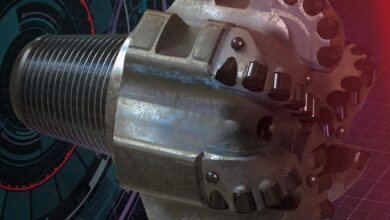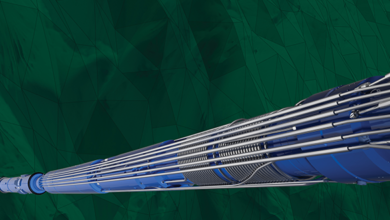Drilling Engineering Assocation opens opportunities to take part in cutting-edge technology research
Continuing research efforts into technologies that can help the industry drill increasingly difficult wells, the Drilling Engineering Association held its first quarter 2008 meeting on 27 March in Houston. DEA provides opportunities for researchers to present their ideas and work to the drilling industry. In turn, operators, contractors and service companies get the chance to learn about and invest in potentially beneficial technologies through joint industry projects.
Among the ongoing JIPs discussed at the first quarter meeting were: Shoulder/thread verifier system (DEA 160), presented by Raymond J Dishaw, Global Systems Inc; Project to Develop an Improved Methodology for Wellbore Stability Prediction (DEA 161), by William Standifird, Knowledge Systems Inc; and DeepTrek JIP for Advancing Deep, Hard Rock Drilling Performance Through Controlled, Full-scale Laboratory Drilling Experiments with Aggressive Bits and Specialized Fluids (DEA 162), by Ron Bland, Baker Hughes Drilling Fluids.
DEA 162
DEA 162 is a continuation of the US Department of Energy’s DeepTrek project. It is aimed at optimizing drilling extremely deep wells with an emphasis on studying rock strength, shale plasticity, bit-balling tendencies, overbalance factors affecting chip hold down; and effects of mud solids, composition and fluid properties.
Phase I and Phase II results of the JIP have been published at the 2007 SPE/IADC Drilling Conference and the 2008 IADC/SPE Drilling Conference, respectively. They concluded that both bit design and HPHT drilling fluids can be improved. Phase III of the JIP may continue, depending on additional funding.
The JIP objectives are to:
• Determine the mechanisms of rock failure under pressure with various cutters.
• Determine how the various properties of drilling fluids affect drilling.
• Prove the theory with full-scale laboratory drilling at simulated depth.
DEA 161
DEA 161 aims to expand and improve the use of wellbore stability modeling technologies by creating awareness, developing best practices and expanding the industry knowledge base. Deliverables include:
• Improved methods, models and procedures.
• Wellbore stability prediction best-practice manual.
• Wellbore stability school.
• Wellbore stability database.
• Wellbore stability website.
A kick-off meeting as well as a third technical advisory board meeting have been completed. A website with information for participants is operational, and approximately 180 wells in the Gulf of Mexico shelf and deepwater and the North Sea are on order for digitization and analysis.
DEA 160
DEA 160 looks at shoulder, thread and torque to provide a verifier system and eliminate drill pipe twist-off caused by lack of shoulder engagement or torque, or casing or tubing leaks caused by a lack of seal or thread engagement. Technical objectives include verifying shoulder connections and thread and seal engagement on various connections; tailoring software and communications offshore/onshore for operators; and developing a connection verification database.
The methodologies to be used include verifying shoulder engagement and torque on drill pipe; verifying complete thread and seal engagement and torque on casing and tubing in real time before going into the hole without any down time; and the ability to see thread engagement.
2008 DEA Workshop
To learn more about these and other drilling research projects and opportunities, the industry is invited to attend the 2008 DEA Workshop, 17-18 June 2008 in Galveston, Texas. The event is sponsored by Pride International.
Topics on the agenda include:
• Advances in sand control: sanding prediction methodology, a sand control completion technique for deepwater horizontal water injectors, and other advances in deepwater completions.
• Drilling tar in deepwater Gulf of Mexico: bitumen encounters, a high-temperature digital accelerometer, and adaptive drilling techniques for floating vessels.
• High-speed telemetry: updates on applications of telemetry drillstrings, Occidental’s wired drill pipe experience at Elk Hills, and using high-speed telemetry drill pipe in deepwater.
• Pushing the limits downhole: depth-of-cut control technology, a new concentric expandable reamer tool, and directional drilling in very soft formations.
• Cutting-edge deepwater applications: the DNV qualification process, management of downhole pressures, and well-testing planning in HPHT.
• Advanced completion systems: solid expandable monobore open-hole liner applications and an all-electric intelligent well completion system.
• DEA 163, “E&P Technology: Extinguishing Coal Seam Wildfires”: Uncontrolled coal seam fires are an environmental and economic problem globally. The upstream industry has the technologies needed to reduce/eliminate the CO2 annually emitted from coal fires. This special presentation will present the technologies that can be integrated to permanently extinguish these fires.




